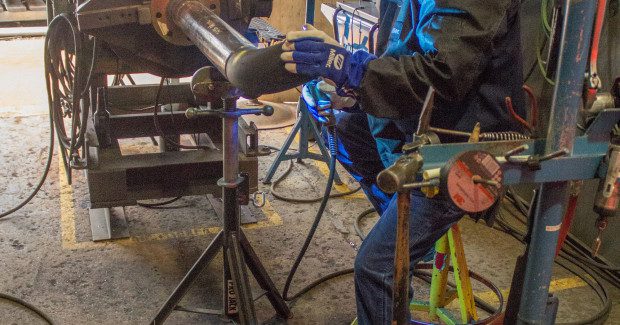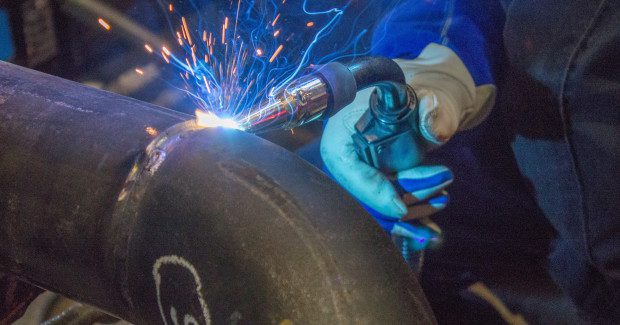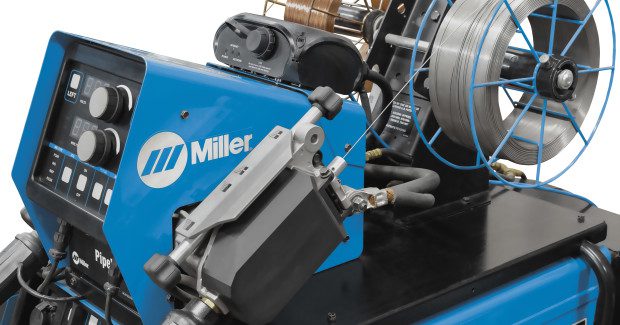Using Welding Intelligence Designed for Pipe Fabrication
Pipe shops now use electronic dashboards to replace pieces of paper that once traveled with spool joints across the floor and through the weld testing process.
Posted: December 1, 2015
Rigorous weld quality requirements and critical project timelines are key issues in most pipe fabrication applications. In addition, there is an increasing pressure on pipe shops to document weld quality and other factors based on customer specifications or a conversion to new welding processes. As fabricators seek ways to differentiate themselves through increased productivity, improved quality and greater project efficiency, there are technologies available that make it easier to track and manage that quality and efficiency data.
Some available welding intelligence systems are designed specifically for pipe fabrication to help pipe shops ensure they are meeting the codes and standards necessary for many pipe welding applications.
PIPE-SPECIFIC SOLUTIONS
Tracking and measurement can help pipe shops improve areas of production and find operational efficiencies. That’s because these systems electronically gather real-time data that empowers companies to drive positive change throughout the welding operation. There are several levels of welding intelligence systems available in the marketplace today — from basic to advanced — that can eliminate time-consuming manual weld data collection and can be used for semi-automatic or robotic welding.
https://youtu.be/ORopwhxBe6A
Basic systems help ensure the correct welding parameters are followed and can augment training efforts. They also make it easier to benchmark continuous improvement efforts. More advanced systems can track and record welding parameters for each weld joint by recording the welding parameters that were set on the machine and that are being used to make the weld. This type of technology offers numerous benefits for tracking and measuring productivity and quality data in pipe shops.
CAPTURE AND CONNECT WELDING INFORMATION
The ability to capture and collect welding parameter information for each individual weld joint allows pipe shops to efficiently track productivity and quality metrics that are crucial in pipe welding applications. The system provides information on any out-of-parameter welds — and the operators creating them ― to help prevent weld defects by alerting shops to areas or specific issues to be corrected. This helps streamline the data collection and documentation process on the production floor, which improves the quality control process. The result is total traceability of the welding parameters in an easy-to-use system.
Because these systems collect real-time welding information as welds are completed, pipe fabricators can monitor progress in real time for greater insight into what’s happening on the production floor. Where previously a piece of paper would travel with the spool joint through the shop and on through the process of weld testing, with information recorded on the paper by hand along the way, that tracking process is now electronic. Dashboards can track productivity, quality and goals — providing instant visibility to factors such as arc-on time, wire deposition rate and when a weld fails to meet established thresholds for amps and volts, for example.
Having this type of data instantly available also allows pipe shops to track where individual joints are in the welding process. This feature is helpful when there needs to be a change order, for example. A check of the management system will show if a spool has been welded or not, and welding operators will have all of that information at their fingertips for every part of the welding process.
REDUCE DATA ENTRY TIME AND ERRORS
Another benefit of these types of welding intelligence systems is the reduction of data entry time and possible errors that can result when information is tracked and entered by hand. Collecting data directly from the weld cell eliminates the need to enter information after fabrication is complete, which reduces potential errors due to typos and poor handwriting.
In applications where a paper tracking system is used, the paper attached to each joint on the production floor must be sent to the office and entered into a computer database by hand. This introduces the element of human error into the process. Issues could also arise if the handwritten marks on each paper noting that the joint was welded to specification become smeared or damaged during the process on the production floor. Replacing that manual process with an electronic process reduces the chances of those potential errors or problems. Some systems also are capable of easy integration with existing software programs, providing users with flexibility and more options.
EASILY TRACK PERFORMANCE AND QUALITY
The ability to easily track productivity, quality and performance metrics can help pipe shops implement changes that result in improvements in those areas. Knowing what actually needs to change is the key to helping shops reach their goals through simple solutions that help drive improvement.


















